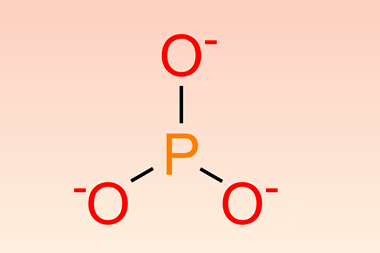Pittcon 2008, New Orleans, US
James Mitchell Crow/ New Orleans, US
A slew of new handheld spectrometers promise to set several staple analytical instruments free from the lab for the first time.
The highly portable, battery-powered devices presented at the 59th Pittcon meeting held in New Orleans in March are already becoming invaluable tools for analysing samples ’in the field’, in arenas from bomb detection to mining and factory-floor quality control.

Massachusetts, US-based Ahura Scientific has developed a handheld instrument that squeezes an infrared spectrometer into a rugged but compact device not much larger than a PDA. As the name suggests, the TruDefender FT is designed primarily as a security device, used to identify suspicious unknown materials such as potential explosives. The instrument doesn’t require any chemistry expertise - instead it comes loaded with a library of reference spectra, and tells the user when it finds a match.
The FT-IR device is designed to complement the company’s existing handheld Raman spectrometer, launched in 2005 and already carried by the FBI’s explosives and hazardous materials teams, as well as other ’first responders’, such as fire departments, around the world. Both Raman and infrared techniques analyse molecules by probing the vibrations between atoms, with each molecule producing its own ’fingerprint’. But the two techniques are highly complementary - where IR signals are strongest from polar linkages such as the carbon-oxygen double bond found in carbonyl groups, Raman produces strong signals from non-polar bonds such as carbon-carbon bonds. ’The two devices are very complementary, and carrying both would make a big difference to first responders,’ former FBI research chemist Edward Bartick told Chemistry World. Bartick, currently director of the Forensic Science Program at Suffolk University in Boston, US, was attending the New Orleans meeting to present his field studies of Ahura’s handheld Raman device.
Bomb squad
Bartick tested the machine’s ability to identify a series of explosives provided by the Boston bomb squad, and found that the device identified the samples in 100 per cent of cases - with one exception. The test of an olive-green sheet of plastic explosive based on pentaerythritol tetranitrate (PETN) / nitrocellulose was aborted when the Raman laser caused the material to start smoking - because the laser causes darkly coloured materials to heat up. ’Lead styphnate, a very sensitive high explosive, actually went off when we sampled it,’ says Bartick. As the IR device doesn’t employ lasers, it won’t share this problem.
’A key development with these devices is their software,’ adds Bartick. ’First responders are not technical experts, so they will take the answers the machine gives them verbatim. That’s not a big problem with this machine because if there’s no match, it will indicate "no match found". But I’d still recommend the device be used by well trained operators - the more knowledge they have, the better the data can be interpreted.’
Material world
A second FT-IR handheld instrument launched at Pittcon is A2 Technologies’ Exoscan. Larger than Ahura’s device, the Exoscan is designed for materials analysis and quality control, rather than for detecting hazardous materials. The benefit of the machine over its lab-based predecessors is the ability to test samples in-situ, whether roaming the factory floor to quality check incoming materials, or testing large structures not readily brought into the lab.
A2 CEO Jon Frattaroli stresses that portability maximises the benefit of FT-IR as a non-destructive analytical technique. FT-IR is a good way to assess fatigue in aircraft composites, since thermal damage causes epoxy resin oxidation, says Frattaroli. Before the development of Exoscan, this analysis required cutting a chunk off the plane to send for lab analysis. Similarly, the device could be used to assess the quality and thickness of industrial coatings, such as those applied to the aluminium surfaces of battleships.
A final device on display at Pittcon, already nestled in the holster of roving analysts, is the handheld x-ray fluorescence (XRF) analyser, first brought to the market by US-based Innov-X. XRF is an elemental analysis technique that works for heavier elements such as metals. Already used for environmental analysis and mining exploration, Innov-X have recently developed a variant specifically designed to detect lead in paint - not just useful for toy manufacturers wanting to check their products, but also for home renovation enthusiasts wanting to
avoid exposure to old paints.

The 59th Pittcon - as the Pittsburgh Conference on Analytical Chemistry and Applied Spectroscopy is generally known - was held in New Orleans, 2-7 March. The meeting, which combines presentations with a large commercial exhibition, attracted almost 9000 delegates, along with nearly 8000 exhibitors from 1110 companies.
2008 marks Pittcon’s first return to New Orleans since Hurricane Katrina hit the city on 29 August 2005. Damage from the storm was greatly exacerbated by the flooding that affected 80 per cent of the city, including the oil refineries that stretch along the banks of the Mississippi.
The city’s population is still around 30 per cent below pre-Katrina levels - a figure mirrored in the drop in enrolments to the city’s universities, says University of New Orleans analytical chemist Matt Tarr. In addition, the University’s chemistry faculty fell from 19 to 13, as not all academics displaced in Katrina’s aftermath returned.
But the brain-drain wasn’t as bad as initially feared, says Faye Grimsley of Tulane University’s department of Environmental Health Sciences. Grimsley has had plenty of work on her doorstep, studying the remediation attempts to rid flooded homes of mould and bacteria. In fact, Grimsley’s own home was destroyed by Katrina: ’My house has been used in many of these studies - it’s become a living microbiology lab,’ she says.







No comments yet